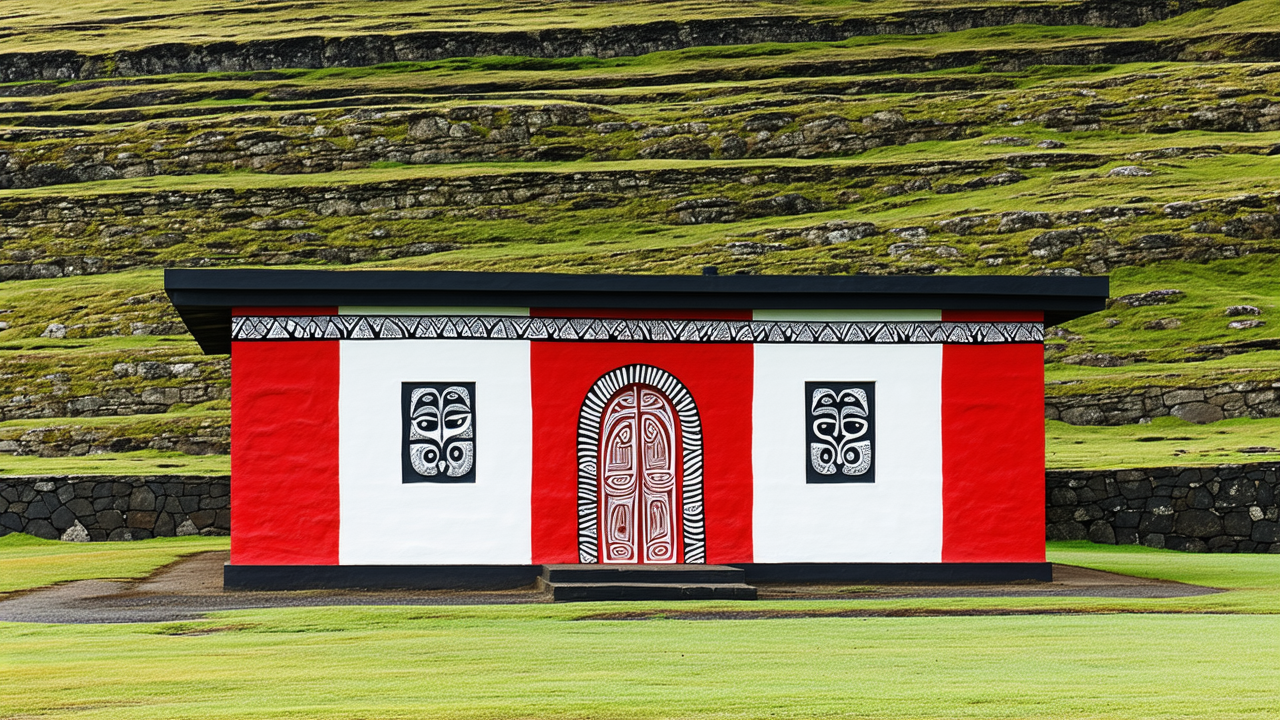The Spiritual and Practical Journey of Relocating Marae in Tairāwhiti
A Spiritual and Practical Journey: Relocating Marae in Tairāwhiti
In the aftermath of Cyclone Gabrielle, the Ngāti Wahia hapū of Tairāwhiti faced a difficult but necessary decision: to relocate their cherished Rangatira Marae from a flood-prone site to higher ground. This move, part of a larger $136 million government-funded initiative, is not just a logistical challenge—it is also a deeply spiritual one, reflecting the complex relationship between Māori communities and their ancestral lands.
Rangatira Marae, with its red and white buildings nestled along the banks of the Waiapoa River, is a site rich in history and memory. The wharenui (meeting house) and wharekai (dining hall), constructed over a century ago, are adorned with native timber and intricate carvings. However, the recent floods have taken a toll, with the wharekai's original dirt floor now ruined and the wharenui missing half of its walls. Dave Pikia, a member of the Ngāti Wahia hapū, reflects on the emotional weight of the decision to move.
“We'll end up burying it, we'll have a karakia and lay it to rest,” said Pikia, describing the process of honoring the marae’s legacy before its relocation. This act of farewell is not a sign of abandonment, but a recognition of the need to adapt in the face of climate change and rising flood risks.
The original site, with its lush gardens and the resting place of Pikia's kuia (grandmother), holds deep spiritual significance. Despite this, Pikia acknowledges that the move is necessary for the preservation of future generations. “It's not the end,” he said. “It's about preserving our taonga for the preservation of our mokopuna and their mokopuna, for future generations. What is happening globally with climate change—we have to manage our retreat.”
The relocation project involves not only the marae itself but also the cultural and spiritual connections tied to the site. While the original roof of the wharenui will be transported to the new location to preserve the mauri (life force) and mana (spiritual power) of the marae, the rest of the structure will be carefully reconstructed to maintain its integrity.
The new site, located just minutes away from the original location but on higher ground, is part of a larger vision for the community. It is also home to the MTT site, the iwi-led civil defense headquarters, ensuring that the marae will remain a central hub for both cultural and emergency purposes.
Dean Whiting, Director Māori Heritage for Heritage New Zealand Pouhere Taonga, emphasizes the challenges and considerations involved in such relocations. “It puts a lot of pressure on communities when faced with these challenges,” he said. “Some of these places are really treasured in the sense that they have carvings, painted artwork, and other taonga that adorn them or are contained in them.”
Moving marae is not just about physical relocation—it also involves rethinking cultural connections, such as the orientation of buildings to natural landmarks or the spiritual significance of the land itself. Whiting encourages communities to maintain their marae in good condition, as this makes future relocations more manageable and respectful of their heritage.
As the Ngāti Wahia hapū prepares to celebrate the 100th anniversary of Rangatira Marae at its new location, the journey reflects a broader narrative of adaptation, resilience, and the enduring connection between Māori people and their land. Even as the marae moves, the stories, memories, and spiritual significance of the original site will remain a cherished part of the community’s identity.
This relocation is not just a response to climate change—it is a testament to the strength and foresight of Māori communities in facing the challenges of a changing world.
